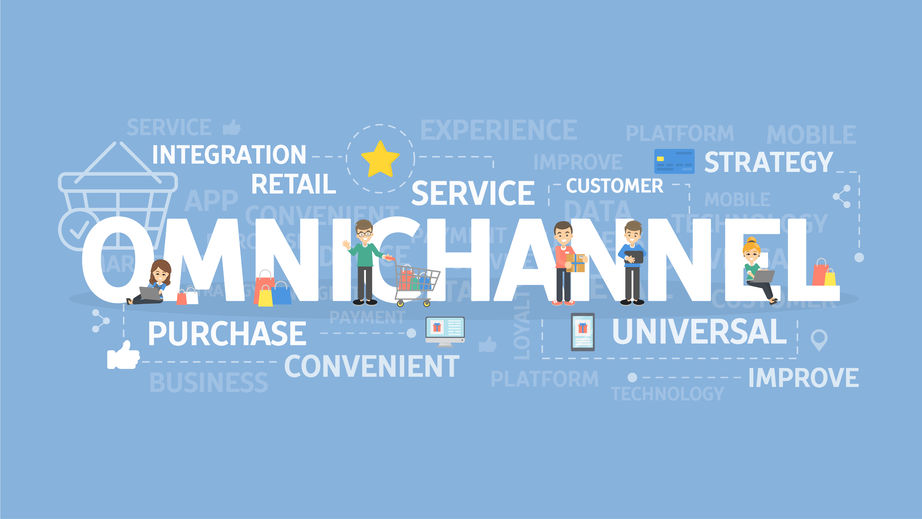
“If people are searching for a product on their phones, there is nothing more targeted than serving that item with a picture, description, and price, while letting customers know exactly how far they are located from the product,” says David Buckley. “Easy access to this type of information means a smoother path to a brand’s front door”.
Sounds big, even too complex for small business? It may be, right now, but it is most definitely the way of the future. Omi-Channel Retailing has been around for a few years and some companies are kicking some serious marketing butt in their design and strategy. Most are giants in the industry but it doesn’t mean it’s not possible for any business to develop this approach.
In today’s market place, consumers want a more personalized shopping experience. A cohesiveness across all channels, whether it be in the brick and mortar locations or shopping through mobile connections, they want consistency throughout. Consumers want easy, they want informative, they want fast, and all the necessary details available, no matter where they are. They want to be able to see local information, to pre-search and find where the inventory is available and then go to that location to make a purchase. And as the recent research would indicate, they are more likely to actually make that purchase when they’ve invested the time online, know the product is available and then step into the store.
So What is Omni-Channel Retailing?
Hubspot defines Omni-Channel as: “the ability to deliver a seamless and consistent experience across channels, while factoring in the different devices that consumers are using to interact with your business.”
Google defines it as: “ensuring marketing strategies are geared toward enabling customers to convert on any channel.”
Very simply, it’s today’s marketing approach that focuses on a cohesive shopping experience across all channels (‘omni’ meaning all and channels being any direct or indirect form of customer communication), not just the previous multi-channel approach which effectively saw finely optimized outlets, but all functioning individually rather than in unison. Omni-Channel Retailing takes the physical shopping experience and the online shopping experience, melds them into a synergistic experience, setting a higher standard for today’s shoppers.
Creating A Better Customer Experience
There are many great examples out there of companies who are getting the ultimate customer experience right using Omni-Channel Retailing. AND reaping huge benefits and accolades for doing so. Some big players like Disney, where a consumer can research a vacation, build it, book it, and ultimately continue to use online platforms to enhance their actual vacation while ON vacation, are miles ahead in the game. Or Starbucks, which sees customers ordering online and picking up in a dash-in/dash-out approach to grab their morning cup-o-joe, and not even having to wait in line for pick up or to pay. Talk about a great customer experience!
For many more companies like these, the consumer experience has evolved to a very tailored extent and involves a variety of different strategies and options to enhance their buying experience, like: in-store customers seeing products on their devices from a mail campaign, purchasing the product online, then choosing a delivery option of ‘Store Pick-up’. Or alternately, having in-store purchases (even possibly ones in inventory at an alternate location) shipped home, and the ability for returns or exchanges to be processed in-store. All channels functioning together to bring a positive and very streamlined experience to consumers. Not only do these options create an environment for greater purchasing, they give the consumer a tailored experience, one that continues long after the purchase has been completed.
No matter where or how a consumer reaches out, an Omni-Channel strategy will provide seamless information and purchasing options to allow the consumer an experience that guides them effortlessly through the buying process.
When most industries today are highly competitive, companies need to find that edge to grab their share of the business. More than ever, the average consumer is not only tech savvy but also looking for a better customer experience. It’s becoming the expectation. All elements need to be very well orchestrated if they are to be successful.
According to Customer Strategist Journal, there are 6 important elements to the digital and non-digital customer experience.
- Reachability
- Service Convenience
- Purchase Convenience
- Personalization
- Simplicity and ease of use
- Channel flexibility
All of these elements are crucial to the customer experience, and Omni-Channel retailing is how this is achieved. By collecting and measuring customer information beyond clicks of a PPC campaign or mobile app usage, by having a strategy that sees data from phone calls, cross-device conversions, and even store visits, retailers can see how their digital efforts are affecting in-store sales and potentially vice versa. They can pinpoint each of these elements to find any resistance in the flow, or pain-points for the consumer, to dig down and create a visually cohesive, functionally cohesive and technologically cohesive, customer focused, retailing strategy.
The Challenges for the Retailer
The benefits of Omni-Channel Marketing are very relevant for retailers, but only if they understand how. The How To’s can be very complicated, not to mention costly, for any business. It doesn’t just require the input from Marketing, it requires building the right organizational structure, so no matter where the consumer enters the process, they are seamlessly and positively encouraged to stay engaged, researching and purchasing. It also requires a relentless understanding of customer behaviors across all channels. Without that base knowledge, there is little possibility of coordinating everything together to function as one, overall solution. With a reported ‘39% stating that their digital channel alone was suffering from “a lack of internal coordination” it’s easy to see how organizational structuring and understanding might be challenging.
From Marketing to Business Development, Customer Relationship Management to Quality Assurance, Online Store Systems to In-store Systems, all points of business need to come together, have buy-in, and take action in the development of the process. A skillfully honed understanding of the journey through online, offline and multi device touchpoints and how they work, and intricate knowledge within each of these platforms and how the customer uses them individually in the process, can help build the internal structure to support a consistent brand presence across all channels. Easier said than done on the Org Chart.
The biggest challenge, however, for smaller businesses, is cost. And as previously mentioned, the cost of building an Omni-Channel Retailing system can be steep. Most businesses don’t have the budget or the internal manpower to build such complex systems. Building in-house Inventory Management systems along with Fulfillment and Transportation Management, all to work in real-time together, can be insurmountable. And these are only a few elements that need to be considered for success. The good news is that technology has come a long way to help businesses do just this, and it’s only getting better.
It’s easy to see how this highly desirable customer, who purchases in-store as well as online and occasionally engages in between, is of great value. And with more and more companies moving towards Omni-Channel Retailing and it becoming the standard, this type of customer is going to grow as consumers become accustomed to the ease and comprehensiveness of the structure. So the question isn’t really ‘if’ a business should move to Omni-Channel, it’s How and When.
Side Note: As I was wrapping up this post, I received my very own tailored, mail channel incentive. This from the company that when I purchased a recent item, got home only to find out the items were two different sizes. I returned to the store to exchange to find that they didn’t have in my size but I could do the exchange immediately and have the item shipped directly to my home. It arrived in about 2 days. I left the experience feeling completely satisfied and actually rather delighted that THIS was the new way of shopping. Easy, no hassle, any place, any device and very pleasant!

